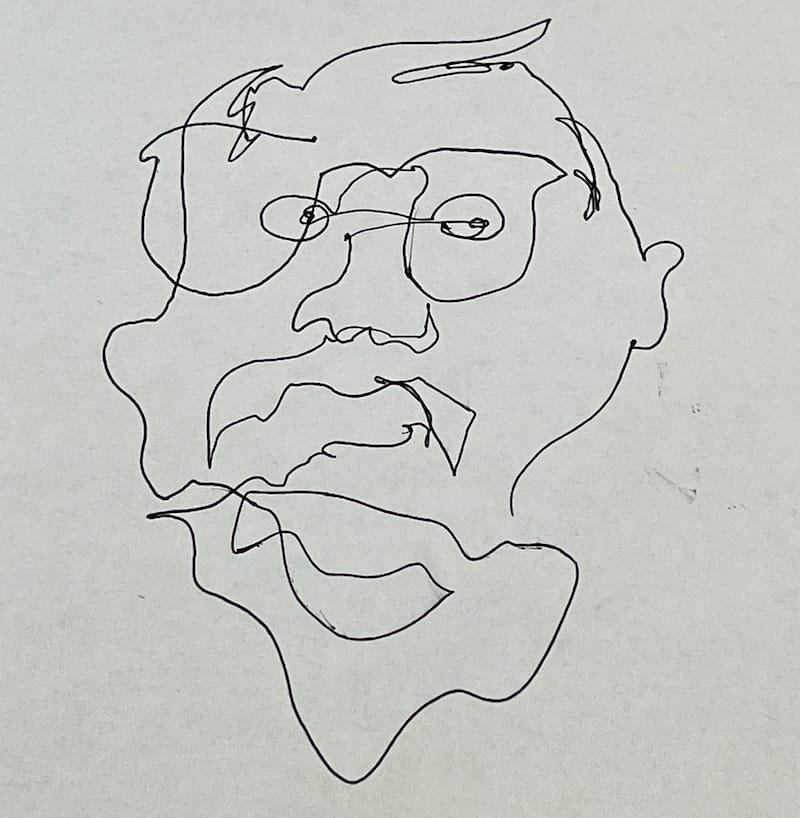Everybody is a Drawer
Not just that one classmate in 4th grade
Recently Jen and I were listening to Mike Birbiglia’s Working It Out (Apple Podcasts, Spotify), a podcast hosted by the actor/comedian/storyteller wherein he invites guests to work out new material with him. In episode #86 Putting On Your Art Eyes Mike collaborates with Illustrator and Graphic Journalist Wendy MacNaughton. Right off the bat this seems like an unconventional choice. Who brings an Illustrator who is not a comedian onto a podcast about comedy which is delivered solely via audio?
We frame most everything we do and its success or failure is dependent on that framing. This premise is as true in comedy & art as it is in software development, each of which at their core are about communication and connecting with your audience. Understanding what they are looking for and how to deliver for them with maximum impact.
“For a long time painting was this thing that represented what we wanted reality to be. So, the Kings would hire the artist to put up these portraits. They didn’t really look like them but it was the idea of what this person looked like and that was considered reality, right?! And then photography came along. Then what is painting if you can actually show what’s real? What happens to painting? Then all of a sudden they are painting like grids, splotches, and splatters. Painting became something totally different because photography was what’s real.
It’s only in the last twenty-five years that people are realizing that the photographers are choosing what’s in and out of the frame. They are choosing the kind of feeling that the photograph is bringing up. It’s totally subjective.
– Wendy MacNaughton on painters, photographers and photojournalism
In creating software the people who develop, project manage, and prioritize it are framing the value that is desirable or possible from the technology. We develop software for our clients and we are often in the position of having to convince them that they are not their customer (or audience). In order to grow the larger audience we have to talk to them and make sure we understand how they will find value in the resultant system. One reason to do that is that people will pay money for systems they find valuable. If you can discover what those things are that are valuable before diving into building you can make sure you’re building the valuable thing first.
That was a huge revelation for me in college when I took photography and drawing for the first time.[ There’s this conception from childhood that there is one person who is the good artist in the class]. I remember in Fourth grade there was one girl who was The Drawer of the class and the rest of us were like “We are not the drawers.” But the truth is we are all the drawers and we were never corrected on it.
– Mike Birbiglia on being taught he’s not a drawer
One way we develop as a team is to encourage one another to tackle the various skills we use on projects with specialists on their own. It would be easy for anyone on our team to point to Kelly, Gina, or Glynnis and say “I’m not a drawer, they’re the drawers.” I know that each of them would immediately “No! Come draw with us!” We don’t get better at the things we’re “not good at” by not exercising them when the opportunity arises.

That cross-functionality and opportunity to experiment provides us different perspectives on how we can set one another up for success by understanding what it takes to deliver other portions of a project.
When I got to college I had a screenwriting professor, John Glavin, and I was studying screenwriting very intensely and he said “You should really be taking photography classes and drawing classes if you want to become a screenwriter and make films.” It’s really about framing.
– Mike Birbiglia on being a better filmmaker through drawing and photography
Whether internal amongst the team, with our clients, or their customers we listen and try to understand what points of friction people have and discover capabilities to overcome them. Then together we design the solution and build small success after small success.
If you’re looking for a team to help you discover the right thing to build and help you build it, get in touch.
Published on January 4, 2023
